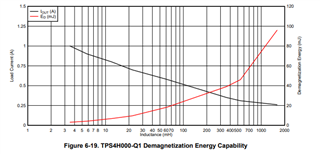Other Parts Discussed in Thread: TPS1H100-Q1
Hi team,
Can I ask some questions about TPS1H000-Q1?
-. When using GND network (1Kohm // diode), which GND should DELAY pin be connected? device GND pin or System GND?
-. TPS1H100-Q1 datasheet states the following sentence. Can you give some details why it may damage HSD or diode when inductive load is switching off?
"Type 3 (resistor and diode in parallel (recommended)): A peak negative spike may occur when the
inductive load is switching off, which may damage the HSD or the diode. So, TI recommends a resistor in
parallel with the diode when driving an inductive load. The recommended selection are 1-kΩ resistor in
parallel with an IF > 100-mA diode. If multiple high-side switches are used, the resistor and diode can be
shared among devices."
Thanks,
Sam Lee



